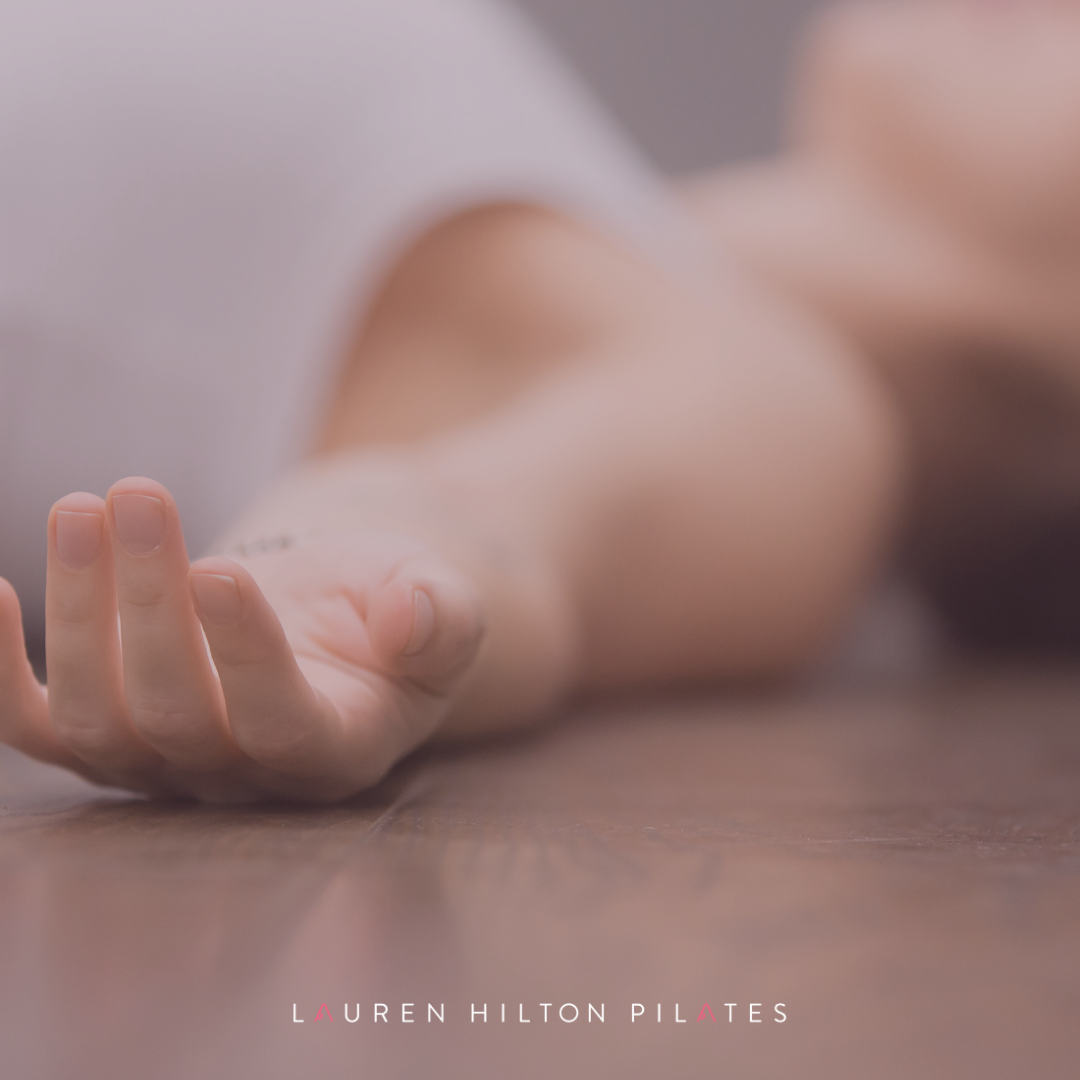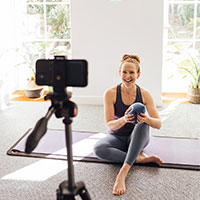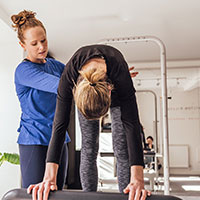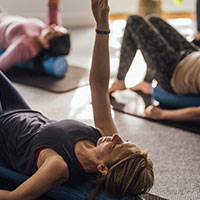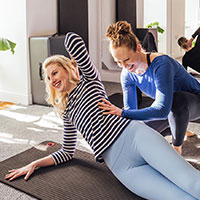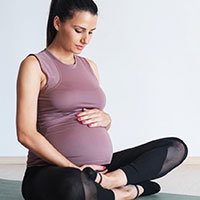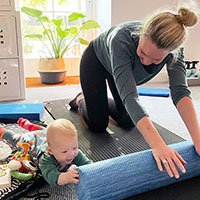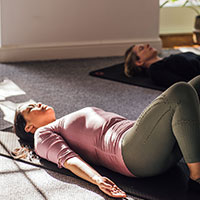What is Pilates?
Is Pilates the same as yoga?
This is the number one question I get asked when I tell people that I am a Pilates teacher! Whilst there is some cross-over between the two movement methods they are very different; yoga originates from India, whereas Pilates origins are a little more recent.
I’m not here today to write about the differences as you probably clicked through to find out exactly what Pilates was about and most importantly what it can do for you! Read on…
Pilates is a method of exercise which can be done using a mat or on special apparatus, it is designed to improve physical strength, flexibility, control and coordination and to enhance mental awareness. It has been used by dancers and elite athletes for decades and chances are if you have visited a physio for an injury then you may have done Pilates without realising it!
The man behind the movement
Pilates was named after a person, Joseph Pilates. Born in 1883, he was a sickly child who suffered from asthma, rhematic fever and rickets. In order to improve his poor health he experimented with many different types of exercise, he began to devise his own set of exercises which he named Contrology, today we know them as Pilates.
In 1912, at the beginning of WWI whilst visiting the Isle of Wight, he was imprisoned in a confinement camp with other Germans. It was during this time of captivity that he developed his exercises, attaching springs to hospital mates bed frames so that the wounded could continue to exercise whilst confined to their bed. Both the reformer and Cadillac designs originated from bed posts and mattress springs and it’s why even today that Pilates has a strong rehabilitative focus. He designed his pieces of apparatus to provide assistance and resistance using pulleys, springs, arc shapes to increase spine flexibility and control and later developed his matwork exercises which would be practiced in fitness centres, Pilates studios and church halls across the globe!
In 1926 Joseph emigrated to New York, en-route he met Clara, a nurse whom he married and worked alongside until his death in 1967. When Joseph and Clara arrived in New York they set up a studio which was located next to the New York ballet school. It didn’t take long before word got out that Joseph’s Contrology exercises could help rehab these frequently injured dancers. This new method of exercise was now established and its popularity increased.
In the 70s, the Hollywood elite started to take notice of the benefits your body could reap from his exercises. By the 80s Pilates had reached mainstream fitness.
Today there are a number of different Pilates schools, each school teaches a variation of the method. However all remain true to the guiding principles of the movement method, a testament to not only its longevity but to the benefit the exercises can have on both body and mind.
Pilates helps your body find stability
Whilst Pilates has become known for strengthening the ‘core’ or ‘powerhouse’ as Joseph called it, it goes way beyond.
When we lift something whether it’s weights at the gym, a bucket of soil in the garden, or picking up our kids, we need this movement to come from a stable place.
Most of us are dominant in the bigger muscle groups in our body but Pilates focuses on the deeper stabilising muscles that are in our necks, shoulders, spine, and pelvis. These muscles are a big deal as they help to stabilise and support our spine, imagine if you went to lift something heavy and you didn’t have the support of these muscles? Chances are that eventually you’d have an injury, a niggle, or end up with chronic lower back pain.
Pilates uses slow, controlled, and precise movements to help strengthen these muscles (if that’s what’s required) or to release them first if they’re tight (don’t strengthen what is already tense but that’s another blog!).
Accessing these muscles that sit more deeply within our bodies helps us to build strength inwardly first, it can help you find more abdominal tone if that’s your aim but more importantly, it’ll help your body function more efficiently so you can prevent injury and live your life to the fullest.
Pilates builds a balanced body
Balance in body, mind, and spirit was at the forefront of Joseph Pilates' method. He believed that balance in the body could not be achieved without balance in the mind and spirit and vice versa. Have you ever felt joy in your mind and pain in your body? It’s unlikely because the body follows the direction of the mind and the mind follows the body.
This idea of balance was also used in terms of muscular balance, Joseph Pilates said
“True flexibility can be achieved only when all muscles are uniformly developed.”
Imbalances in the body can occur due to lifestyle, as a result of the work that you do, sports that you play, or even your genetics. Maybe you sit rotated at your desk all day or play a sport where you always drive force from your right side – whatever it is there are likely to be imbalances somewhere. Sometimes these imbalances cause issues causing muscles to overwork, become restricted, and cause us pain or injury.
Unlike other exercise methods, a lot of Pilates repertoire incorporates unilateral movements – where you exercise one side of your body at a time. This helps to highlight and then even out these muscular imbalances.
Pilates promotes good breathing habits
“Before any real benefit can be derived from physical exercises, one must first learn how to breathe properly. Our very life depends on it.” Joseph Pilates
Pilates exercises utilise the breath as a way of thoroughly cleansing or creating an ‘internal shower’ for the lungs’. One of the most famous abdominal exercises, the hundred, was designed to teach students to breathe in and out fully.
This quote is so relevant today with the prevalence of shallow breathing due to stress and poor posture. If we continue to shallow breathe our nervous system is constantly in a state of fight or flight which can lead to many chronic health conditions. By learning to breathe properly not only will you be sending oxygen-rich blood throughout your body which helps to promote cell recovery. Breathe can also be used to stimulate certain muscles. A great example of this is our ‘core’ which comprises the diaphragm, pelvic floor, abdominals, and deep spinal muscles which we can activate when we focus on the exhale. Our pelvic diaphragm can only be healthy when we breathe efficiently. This, along with the promotion of good alignment and muscular balance, can go a long way in helping conditions such as Pelvic Organ Proplapse (POP), urinary incontinence, and diastasis recti.
Pilates is a mind-body exercise
What does this mean? Whilst Pilates has many physical benefits the mental benefits are equally far-reaching. Pilates is a mindful form of movement, this means that you are encouraged to pay attention to what you are doing and why you are doing it. When we move mindfully we are paying attention on purpose, Pilates movements are slow and precise, this is intentional! You have to concentrate so hard on the movements you are doing that your mind can be nowhere else, it’s this awareness of the present moment that helps us to find a wonderful harmony between body and mind and to develop our felt sense of self.
“Through the Pilates Method of Body Conditioning this unique trinity of a balanced body, mind and spirit can ever be attained. Self-confidence follows.” Joseph Pilates
If you approach your Pilates practice in this mindful way then you’ll not only find a deeper connection to your body but also help to alleviate stress, anxiety, and depression and even manage pain more effectively.
Pilates as a way of life
“The man who uses intelligence with respect to his diet, his sleeping habits and who exercises properly, is beyond any question of doubt taking the very best preventive medicines provided so freely and abundantly by nature.” Joseph Pilates
The Pilates method was intended to be a way of life rather than simply an exercise programme. Joseph Pilates emphasised his method of exercise is vital to health but also recognised that recreation, diet, hygiene, being in nature, and mindset was also key. In his book Return to Life, written back in 1945 he talks about whole-body health which he believed could be achieved by a balance of restorative sleep, work, play, and diet. He also goes on to talk about whole-body commitment which meant being committed and present to your practice. With our highly stressed lifestyles impacting both sleep, diet, and play his principles have never been more relevant than they are today.
As I write this I don’t pretend to have the perfect balance in my life. I am constantly shifting and changing when I feel things are out of sync. The one thing I know is that through regular Pilates practice I feel fitter, stronger, more flexible, calmer, and more able to centre myself in the face of adversity. And this has been SO helpful these last eighteen months!
Why not give it a try if you’re curious, doing something at the same time each day or each week very quickly becomes a habit and habits become a way of life! We have plenty of ways to help you move and embrace the philosophies of this amazing movement method, from weekly classes in our tranquil studio to Pilates on-demand to specialist courses.





